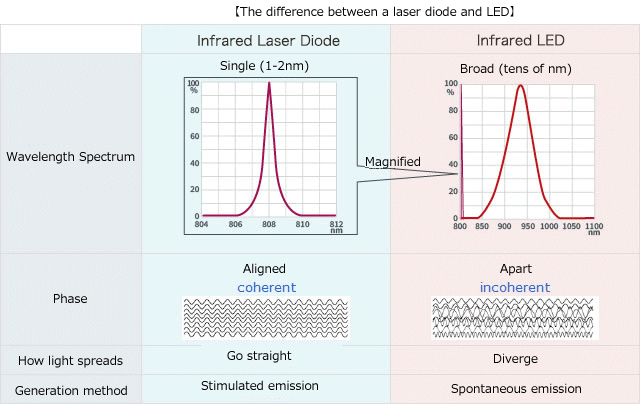Laser Diode <What is a laser diode?>
What is a laser diode?
The LASER in Laser Diode is an acronym for 'Light Amplification by Stimulated Emission of Radiation'. It is also referred to as a semiconductor laser and generally abbreviated as LD.
Its main feature is high coherency, making it possible to emit light with the same phase and wavelength.
Laser oscillation is achieved by amplifying light generated through current injection between two mirrors. Simply put, a laser diode is an LED that amplifies and emits light using reflectors.
【Light Emission from a Laser Diode】

Compound semiconductors such as AlGaAs, InGaAIP, InGaN, and ZnO are typically adopted as the element material instead of conventional silicon used for LSIs, transistors, and diodes, which feature poor transition probability (probability of current turning into light) that make it unsuitable for laser diodes.
The difference between a laser diode and LED
The difference between a laser diode and LED is summarized in the table below.
Laser diodes are characterized by a single waveform with narrow spectral width and highly directional light with uniform phase, making it easy to control the energy.

ROHM offers industry-leading 660nm laser diodes, Infrared laser diodes, 2-wavelength laser diodes and multibeam laser diodes which are prouds of the production volume of top class.




